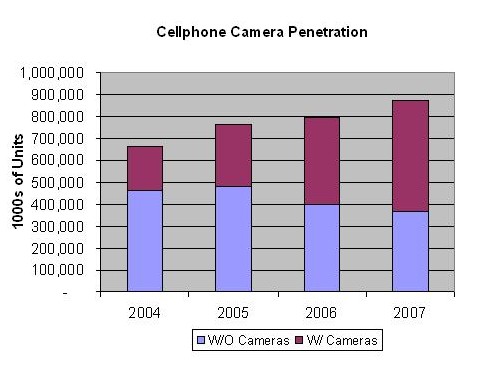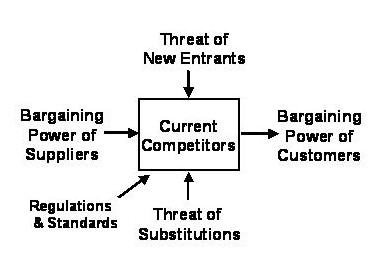People make fun of scientists and engineers with their use of acronyms, but marketing has plenty of its own, and someone not in marketing may wonder what the hell they mean.
To answer the question, most marketing books today typically try to push a "new" concept - guerilla marketing, viral marketing, etc. - rather than this basic stuff, so I'll give a quick run down on these items using some real-world examples before getting to a recommendation.
Scenario - You market a widget for the cellphone camera market. Your widget is only used in phones that have cameras embedded in them.
TAM - Total Available Market - In this example this would be the total cellphone market.
SAM - Served Available Market - This would be cellphones with cameras since your product is only used in them.
So the first question, is why distinguish between TAM and SAM, especially since you don't even sell into phones without cameras? The answer is that one way to grow your revenue without increasing market share is to grow the number of cellphones with cameras (or the penetration rate). So the SAM/TAM designation is used to distinguish between actually growing your market share versus just growing your volume. It also allows you to look at strategies on how to push penetration for your served segment instead of just market penetration if you happen to be in a market where SAM penetration is stuck. This chart shows the TAM/SAM breakdown for cellphone cameras:

Obviously there are plenty of markets where the TAM and SAM are the same.
SOM - Share of Market - this is just the market share you have in your SAM, or in this case your total volume versus the total SAM volume. As noted above, by comparing your SOM to both your SAM and your TAM, you can get a feel if you are really growing market share, or just increasing volume along with the total market growth.
Okay so far? Next we get to the 3Cs. Everyone knows the 3Rs, but what are the 3Cs of Marketing? Customers, Company, and Competition. The idea is that when doing business planning you have to do an analysis and get an understanding of these items when creating a business plan. So in our case you would do an analysis of customers Nokia, Samsung, Motorola, etc. Look at what your competition has on the market, what their roadmaps are, and also understand what your company's products and roadmaps are and how they compare and serve the market. In doing this analysis you would probably do the 4Ps: Product, Pricing, Placement and Promotion.
When I do business planning, however, I like the model presented by Michael Porter in his book Competitive Advantage. This is a pretty hefty read, and a little dated now, but the model itself is timeless and what I use for business analysis. It expands on the 3C concept to understand an industry through its entire value chain:

The thing Porter points out with this model is that just understanding your competitors, customers and company is not enough. For example, can a supplier forward integrate into your market and become a competitor? Can a customer backward integrate and become a competitor? New entrants and substitutions are always a threat. And regulations by the government should always be considered since they can break - or create - entire markets on their own (v-chip makers owe their whole product line's existence to a government regulation).
Porter has some more recent books on this topic, and his model has been picked up by plenty of others, so I would suggest a look along this line of thought for anyone doing business analysis or planning.

7 comments:
hello
Thank you very much for that information. In my career we are viewing this topic. mainly the TAM and SAM. the info you give is truly significant. if you had any bibliographic information I would appreciate endorsement or recommendation.
Sophia W. Bevan
The TAM, SAM, SOM portion of the post is original material. I learned these terms while working in the semiconductor industry, where they are widely used. While I am sure that there are business books that have this in there, for that part of the article I wrote it from my own knowledge.
Hello,
Im actually working on an internship project in the semiconductor industry and was told to figure out the TAM and SAM could you please help me in how to go about starting it?
The TAM and SAM of what?
Read above - your Total Available Market is anything and everything that could remotely use your product.
Your Served Available Market is the market that does use your product.
In most cases the TAM and SAM are the same - your product is very specific and fits one need.
But if there are substituion effects you could look at, or markets that don't use you technology or could, then your TAM is greater than your SAM, and part of your job as a marketing person is to figure out how to increase your SAM.
TAM and SAM for the semiconductor industry in india. I have a list of a few customers of my company. will a % of the customer revenues give me the TAM?
One way to look at this:
1. The TAM is the total semiconductor market in India - every computer chip, memory chip, processor, etc. sold in the country. This would be industry data.
2. Your SAM is what ever your product is in India, let's say processors. Again this is probably industry data.
3. Then you see what your actual market share is in India. In this example this is your total processor sales (company data, customer sales) divided by total India processor sales.
So you have:
TAM - All of India Semis
SAM - India processor Sales
Market Share - Your actual market share sales of processors in India
So your boss can look at a simple graph to see if your market share and SAM are close, and if so, he needs to expand into other products, like memory chips, in order to increase revenues - or somehow grow the overall demand of processors in India (grow the SAM).
Or, if your share is much less than the processor SAM, he needs to work on sales of processors in India against existing competition(or figures out that Sales isn't doing their job). So grow market share, not worry about SAM at this point.
Part of the job of putting together the data is to ask what information is your boss trying to figure out? That will help a lot to figuring out how to slice the data.
Thank you so much!
I will try to figure out all that u mentioned and will probably get back with more queries!
Post a Comment